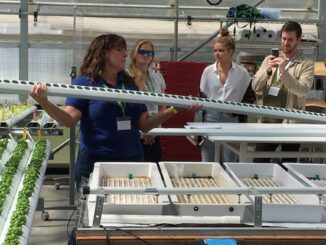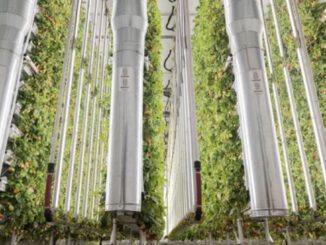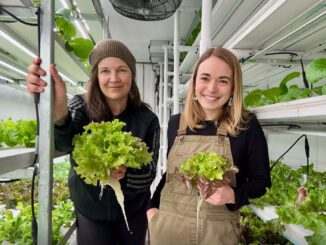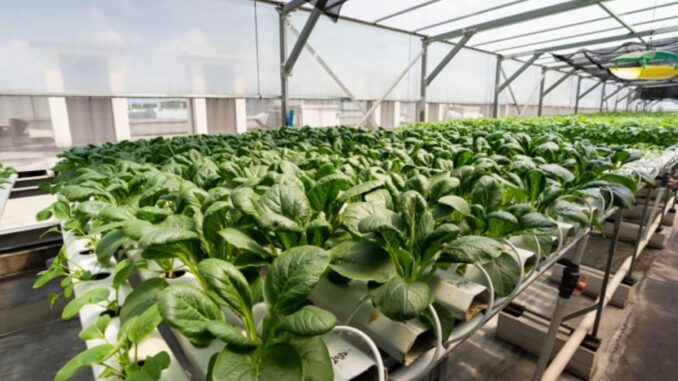
Commentary: If you love eating vegetables, why not homegrown greens?
CSA Community Supported Agriculture | William Chen |
IMAGE: Urban rooftop farm in Singapore. (Photo: Enterprise Singapore)
SINGAPORE: As I navigate through the well-stocked online aisles of a local supermarket, the discernible disparity in pricing between vegetables grown in Singapore and imported alternatives captures my attention.
A packet of baby kai lan from China was tagged at S$0.71 (US$0.53) per 100g. In contrast, a packet of the same vegetable grown in Singapore was priced at S$1.63 per 100g.
A bunch of coriander from Thailand was priced at S$4.06 per 100g, while a locally grown alternative was going for S$5.10 per 100g.
Likewise, 100g of kale produced locally was priced at S$3.66, whereas the same amount of imported kale from Australia was tagged at S$2.17.
You get the picture.
The stark contrast in cost highlights a pressing challenge faced by Singapore’s local farming industry – encouraging more consumers to embrace homegrown greens.
IS IT ALL ABOUT THE MONEY?
Singapore currently imports about 90 per cent of its food, making it vulnerable to depleting natural resources, climate change and unpredictable geopolitical and disease outbreak situations.
While the nation seeks to locally produce 30 per cent of its nutritional needs by 2030, recent media reports have highlighted the challenges in doing so. Singaporeans have been slow to embrace local produce, and some urban farms are being left with so much unsold greens they have resorted to either donating or throwing them
In a recent CNA report, one local farm capable of supplying 500kg per day said that it had to throw away extra vegetables, after seeing a 40 per cent surge in leftover greens due to lack of buyers.
Local farmers have cited price point as one deterrent for local consumers embracing locally produced vegetables.
They also point to the lack of consumer awareness on the retail end as well as in neighbourhoods where rooftop vegetable farms are operating. As a result, consumer buy-in is not on par with the production of local vegetables, leading to an imbalance in supply versus local demand.
CLEAN AND GREEN
Singaporeans love their vegetables – that much is obvious. In total, Singapore imported 518,000 tonnes and produced around 19,800 tonnes of vegetables last year.
The unfortunate reality is that the higher prices of homegrown vegetables and lack of awareness vis a vis imported alternatives are a wasted opportunity for fostering a sustainable local agricultural ecosystem.
Just 3.9 per cent of vegetables consumed here last year were locally grown, according to data from the Singapore Food Agency, down from 4.3 per cent the previous year.
But it’s not just about consumer buy-in. Establishing a comprehensive value chain for our farms, more than just focusing on consumers’ buy-in, is critical to move towards the government’s 30 by 30 drive.
Farming faces a multitude of issues that encompass both environmental and economic concerns. Two significant challenges are emissions and the rising cost of operations.
Besides a few traditional open field farms in Lim Chu Kang, new entrants tend to veer towards rooftop farming, open air vertical farming and indoor farming.
While indoor farming is more tech driven and climate resilient, their operating costs are also much higher, requiring significant investments in machinery and technology.
For example, local farmers have told me that a 200 sq m rooftop farm costs about S$500 per month to operate whereas more than S$7,000 a month is needed for an indoor farm of the same size.
Finding the right trade-off may not be easy. On one hand, traditional open field farms may require less energy and technology. However, costly manpower is needed, and the production yield is lower than indoor farming and heavily dependent on weather conditions.
On the other hand, indoor farms are climate resilient and yield much higher production with fewer manpower needed. However, the operation is far more costly, especially in terms of energy use.
Environmental considerations come to the fore as well. It is estimated that to produce 1,000kg of lettuce, 540kg of CO2 emissions are generated from traditional open field farming. Indoor farms and rooftop vertical farms generate 5,744kg and 158kg of CO2 emissions respectively to produce the same amount of lettuce.
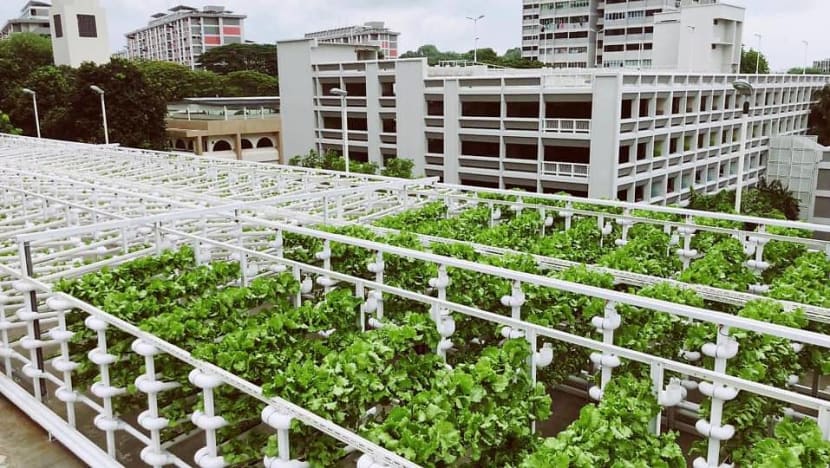
In terms of long-term sustainability, urban vegetable farming (rooftop and indoor) saves up to 95 per cent in water usage. Being in a more controlled urban environment, locally grown vegetables are fresher and can be made more nutritious by adopting tailored-made organic fertilisers.
SHARING THE SPOILS
To unlock the full potential of homegrown greens, a multi-faceted approach is required.
Allowing for a mixture of urban farming practices may achieve the best results in terms of production yield, climate resilience and environmental sustainability.
The industry could also benefit from community-supported agriculture (CSA), which fosters a direct relationship between farmers and consumers. In a CSA arrangement, consumers subscribe to the harvest of a certain farm or group of farms and receive portions of the farm’s harvest on a regular basis. In addition to households, demand drivers could also include the F&B sector, supermarkets and wet markets, and schools.
Several countries including Italy, Switzerland, Germany, the United Kingdom and the United States already practise CSA.
CSA not only allows a direct and adjustable connection between demand and supply which can be further facilitated by online purchase platforms, but also ensures higher nutrition value and greater food safety as the supply chain is more localised and shorter between farms and consumers.
Original Article: https://www.channelnewsasia.com/commentary/singapore-vegetable-local-produce-urban-farming-agriculture-support-3661161

